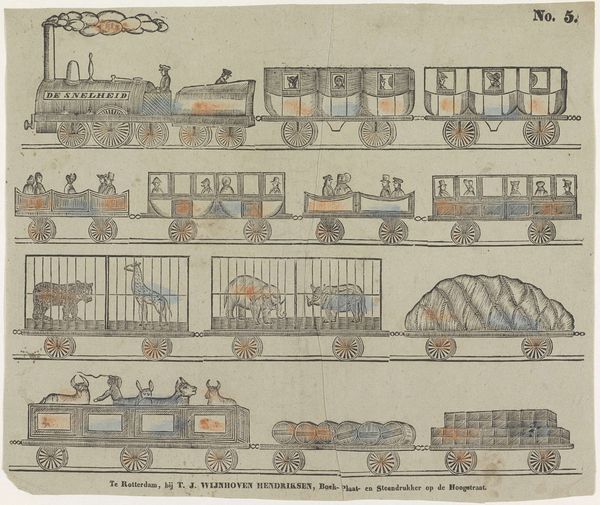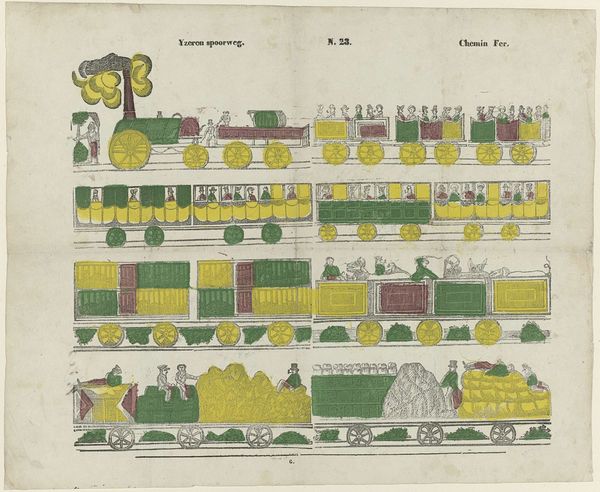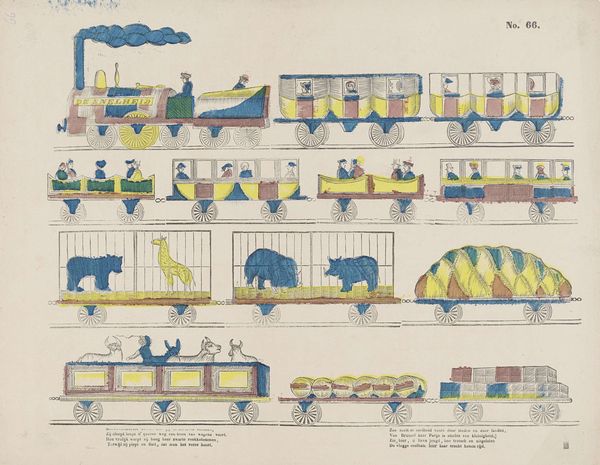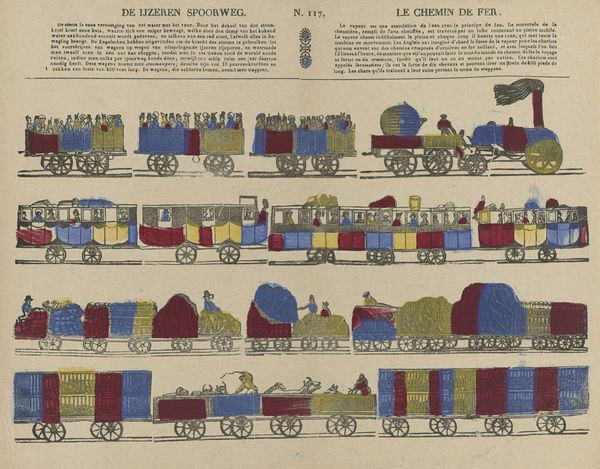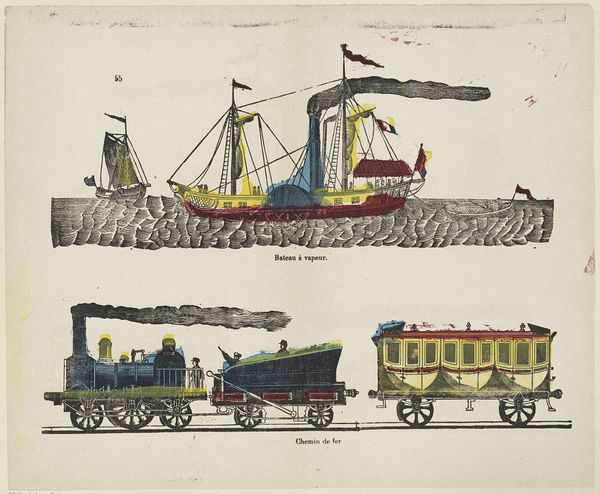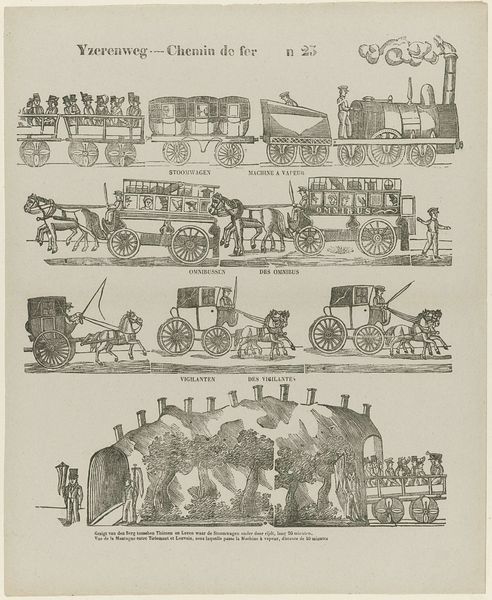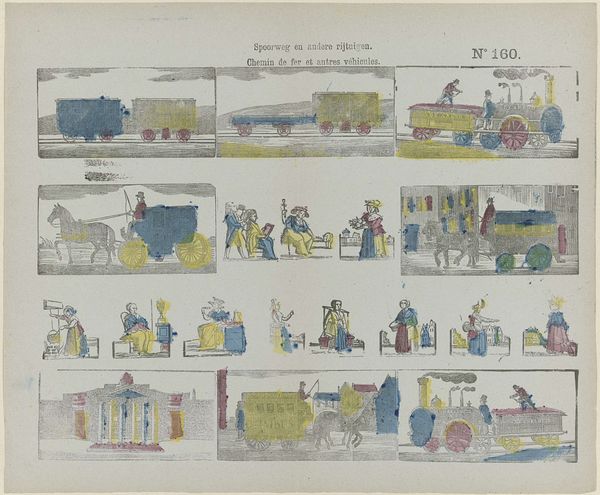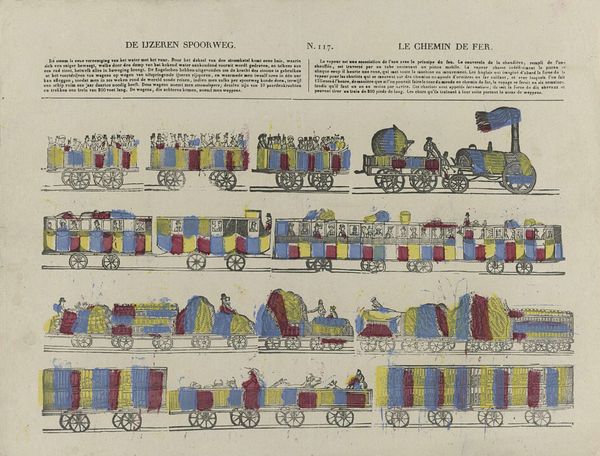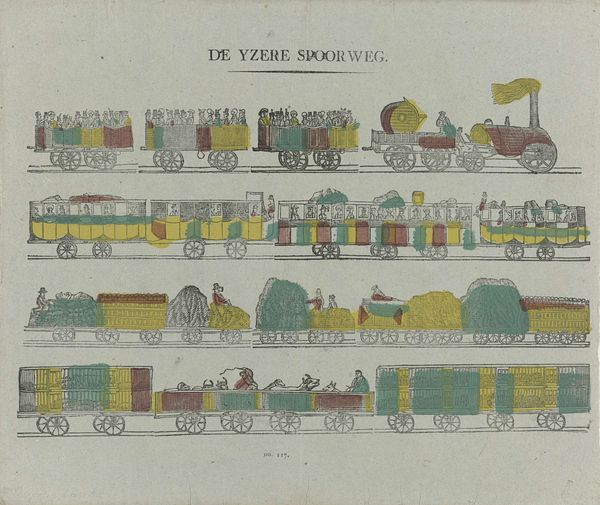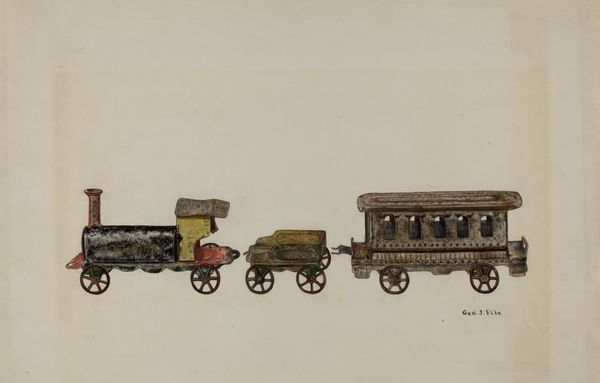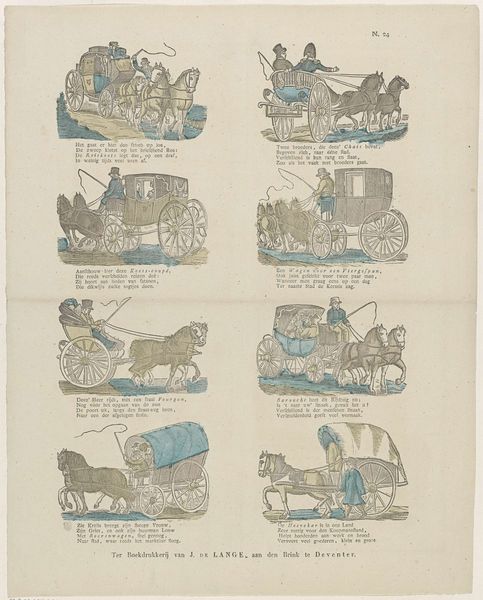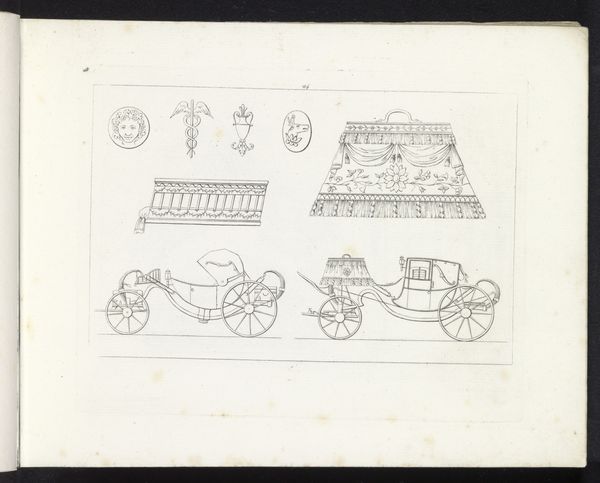
print, woodcut
#
dutch-golden-age
# print
#
landscape
#
woodcut
#
genre-painting
#
realism
Dimensions: height 316 mm, width 412 mm
Copyright: Rijks Museum: Open Domain
Curator: So, this is "Spoortrein," a woodcut print dating from around 1832 to 1850 by Theodorus Johannes Wijnhoven-Hendriksen, housed here at the Rijksmuseum. I find it quite peculiar: three layers of rail wagons filled with humans, animals in cages and raw materials such as big hay stacks and stones! It almost feels surreal and brings to mind current societal problematics like transportation of living beings and the state of labor... What jumps out at you? Editor: It’s definitely unusual! The composition, with these neat rows of train cars, is striking. But why this particular collection of subjects? What story do you think the artist is trying to tell, especially by placing humans above the animals? Curator: That's a very good question, because it’s not self-evident, is it? On one level, we could read it as a literal representation of early train transport, but the arrangement seems loaded with social commentary. The hierarchy is impossible to ignore: those in power transported comfortably above, while animals, possibly exotic or soon-to-be slaughtered, are caged. Even raw materials such as the hay, likely served to nourish livestock held in captivity. The artist might be asking us to consider who benefits from progress and at what cost? Do you see anything that might reflect the time’s values? Editor: That’s a fascinating point about hierarchy! I hadn’t considered the cages as metaphors for control and domination but your observation makes perfect sense considering our modern awareness for transportation. Perhaps it reflects a society grappling with new technologies and their implications. Thinking about the positioning of animals does feel pointed now. Curator: Precisely. We must also not ignore the name on the locomotive "DE SNELHEID," the Speed; technology comes with responsibility. How it can be inclusive, harmless. That it may very well reflect some contemporary social justice issue. Editor: It’s amazing how much complexity can be packed into a seemingly simple print! Looking at it now, it raises far more questions than I initially thought. Curator: Indeed! It prompts us to consider how even seemingly straightforward images can reflect deeper societal structures and spark critical conversations. It just goes to show how works from the past can provide us insights for today!
Comments
No comments
Be the first to comment and join the conversation on the ultimate creative platform.
